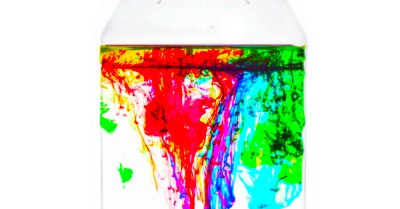Explore liquid density by creating a firework effect in a jar with this simple activity.
Materials:
- An empty jar
- 4 tbsp of cooking oil
- Food colouring (variety of colours)
- Water
- A bowl
- Paper towels
- A spoon
What To Do:
- Fill an empty jar 3/4 of the way with water.
- In a separate bowl mix 3 tbsp of cooking oil.
- Add 3-5 drops of food colouring for each colour that you are using.
- Stir the food colouring into the oil.
- It will not mix, but stirring will help to break the food colouring into smaller droplets.
- Pour the container of oil into the jar of water.
- After a few seconds the oil will settle at the top of the jar, but the food colouring will begin to shoot down and mix into the water, creating a "fireworks" effect!
The Science Factor
The food colours will continue to shoot down like fireworks until all of the droplets have fallen from the oil. This is because food colouring being water based will mix with water but not oil. Oil and water will not mix due to varying liquid densities.
The oil is less dense, causing it to float on top of the water. The food colouring is more dense than the oil, so it falls through and mixes into the water.
Hints and Tips:
- Use only one colour
- Try this in a glass for each child to create their own fireworks
Reference:
Growing a Jeweled Rose
